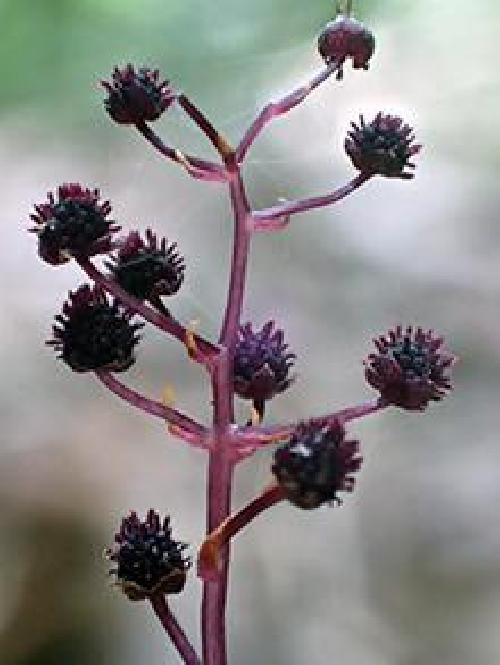Suetsugu Kenji, a Project Associate Professor at the Kobe University Graduate School of Science, has discovered a new species of plant on the subtropical Japanese island of Yakushima (located off the southern coast of Kyushu in Kagoshima prefecture) and named it Sciaphila yakushimensis. This research was published on 20th February in the Journal of Japanese Botany.
Certain plant species known as mycoheterotrophic plants have abandoned photosynthesis and instead live as parasites, exploiting their fungal hosts for nutrients. However, these parasitic plants are small and only appear above ground when they are in flower or fruit, so accurate information on their distribution is limited.
Professor Suetsugu is involved in documenting the distribution and classification of the mycoheterotrophic plants in Japan. In October 2015, while carrying out a survey of the lowland laurel forests in Yakushima with photographer Yamashita Hiroaki, he discovered an unfamiliar mycoheterotrophic species. He collected a specimen, and carried out a detailed examination of the plant's morphological characteristics in collaboration with Professor Tsukaya Hirokazu (Tokyo University School of Science) and Professor Emeritus Ohashi Hiroyoshi (Tohoku University Botanical Gardens, Tsuda Memorial Herbarium).

The results of their examination showed that this 5cm long plant species is closely related to the Sciaphila japonica of the Triuridaceae family. They determined that it was a different species from the following observations: the parts above ground are a dark purple, the filament of the male (staminate) flower is no higher than the anther, and the style of the female (pistillate) flower is club-shaped with multiple papillae. They named the new species Sciaphila yakushimensis (Suetsugu, Tsukaya & H. Ohashi) after its place of discovery.
The presence of the Sciaphila yakushimensis, a parasitic species that relies on fungal hosts, is also evidence that a hidden network of symbiotic relationships between fungi and roots (mycorrhizae) exists in the lowland primeval forests of Yakushima. Professor Suetsugu comments, "Yakushima receives a lot of attention for its Jomon cedars, but this plant was discovered in an area where deforestation is permitted. The discovery of the Sciaphila yakushimensis, nurtured by the fungi and the nutrient-rich forests in which it grows, should make us reaffirm the value of Yakushima's lowland primeval forests".




Comments